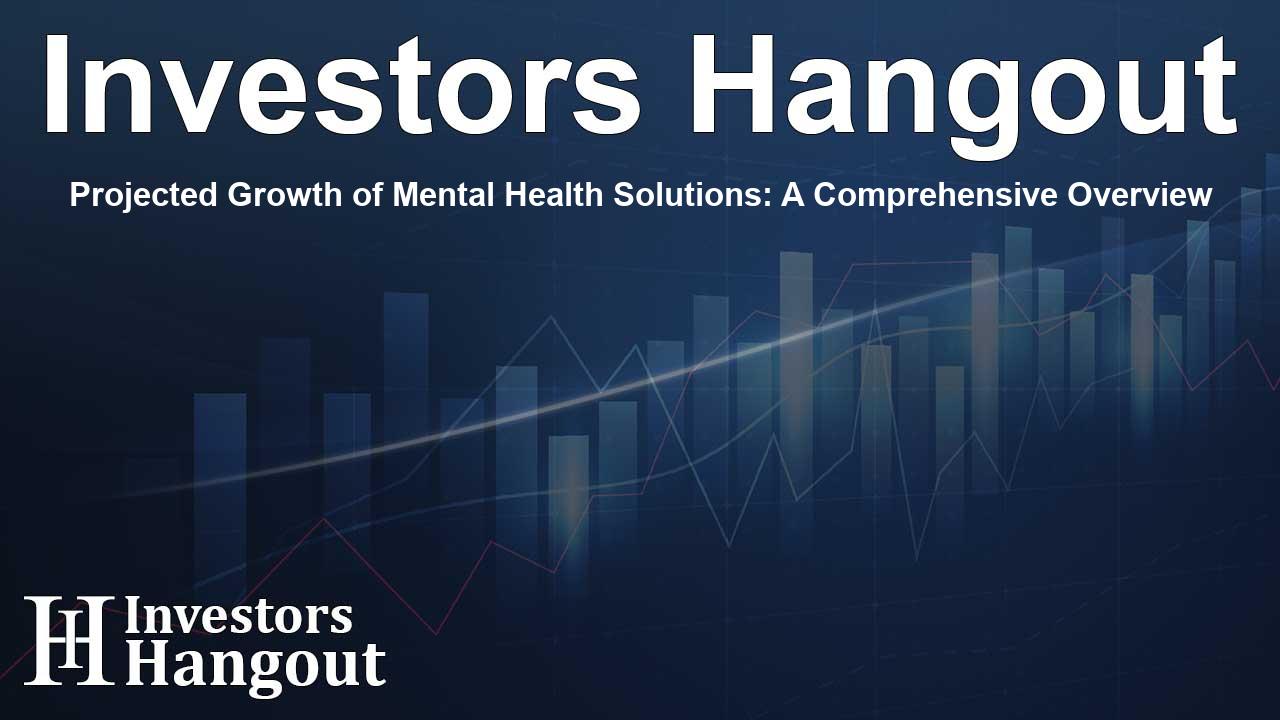Projected Growth of Mental Health Solutions: A Comprehensive Overview

The Growing Landscape of the Mental Health Market
The mental health sector is undergoing significant transformation, driven by increasing awareness and demand for effective treatment solutions. The market, valued at $423.16 billion recently, is poised to see robust growth, targeting a valuation of $625.07 billion by 2033 with a compound annual growth rate (CAGR) of 4.43% from 2025 to 2033. This phenomenal growth reflects a multifaceted approach to addressing complex demographics affected by mental health issues.
Understanding the Current Mental Health Crisis
In recent evaluations, it was found that approximately 23.08% of U.S. adults, translating to nearly 60 million individuals, have faced mental health challenges within the last year. The incidence rates exhibit a stark variability by region; for instance, New Jersey records a lower prevalence at 19.38%, contrasting sharply with Utah's figure of 29.19%. Further analysis reveals that about 5.86% of these adults meet the criteria for serious mental illness (SMI), emphasizing the severity of the situation. Gender comparisons indicate that approximately 7.1% of females report experiencing SMI, while the figure stands at 4.8% for males. Youth demographics are particularly alarming, with young adults aged 18-25 reporting a staggering 36.2% prevalence of any mental illness, substantially surpassing older age brackets.
Barriers to Accessing Mental Health Care
The quest for adequate mental health care services presents numerous challenges, even as uptake has increased. In 2024, 13% of adults engaged in mental health counseling, a modest rise from 10% in 2019. Despite this improvement, structural, economic, and geographic barriers impede many individuals who seek help. Currently, over 160 million Americans live in areas classified as Mental Health Professional Shortage Areas, highlighting the pressing need for approximately 8,000 additional professionals to meet demand. The situation is exacerbated by prolonged wait times, with the average wait for an in-person psychiatric consultation stretching to 67 days and about 43 days for telepsychiatry sessions.
The Economic Impact of Mental Health Inequities
Financial barriers continue to challenge individuals seeking mental health care. By 2024, nearly 58.9% of adults with mental illness reported that cost was a significant barrier to necessary treatment. This economic strain carries substantial implications, with mental health inequities potentially costing the national economy upwards of $478 billion. Projections point toward these costs ballooning to $1.3 trillion by 2031, largely due to rising disability claims and lost productivity.
Emerging Trends in Mental Health Treatment
Significant advancements in mental health treatment methods are emerging alongside the complexities of the crisis. Telehealth services have become integral, now representing over one-third of outpatient interactions, effectively bridging geographic obstacles for many patients. As work-from-home practices normalize, these services have gained traction, particularly in rural areas.
Technological Innovations Enhancing Mental Health Care
Artificial intelligence (AI) plays a pivotal role in reshaping mental health services. AI-powered diagnostics and personalized therapeutic applications are gaining acceptance, helping clinicians offer tailored support and streamline administrative processes. Furthermore, emerging technologies like virtual reality (VR) are enhancing therapeutic interventions, especially for anxiety and PTSD, by creating controlled, simulated experiences.
Projected Future Developments and Sustainability
As the mental health market continues to evolve, sustainability becomes crucial. Historical spending in this sector has surged, with national health expenditures reaching approximately $4.9 trillion, representing about 17.6% of the U.S. Gross Domestic Product in 2023. The commitment to improving mental health care is underlined by substantial state-level investments, with California leading the charge at approximately $6.76 billion. Innovative solutions, such as rapid intake strategies, have also shown promise in reducing wait times for patients, addressing a significant bottleneck in care delivery.
Frequently Asked Questions
What is the projected growth rate of the mental health market?
The mental health market is projected to grow at a CAGR of 4.43%, reaching $625.07 billion by 2033.
How many adults in the U.S. faced mental health issues recently?
Approximately 60 million adults, or around 23.08% of U.S. adults, experienced mental health challenges in the last year.
What are the major barriers to accessing mental health care?
Significant barriers include financial constraints, lack of availability of professionals, and long wait times for services.
What role does technology play in mental health care?
Technology, particularly telehealth and AI, is transforming the way mental health services are delivered, improving access and treatment personalization.
What are some demographic trends observed in mental health issues?
Young adults (18-25) exhibit the highest rates of mental illness, with significant prevalence also noted among adolescents.
About The Author
Contact Caleb Price privately here. Or send an email with ATTN: Caleb Price as the subject to contact@investorshangout.com.
About Investors Hangout
Investors Hangout is a leading online stock forum for financial discussion and learning, offering a wide range of free tools and resources. It draws in traders of all levels, who exchange market knowledge, investigate trading tactics, and keep an eye on industry developments in real time. Featuring financial articles, stock message boards, quotes, charts, company profiles, and live news updates. Through cooperative learning and a wealth of informational resources, it helps users from novices creating their first portfolios to experts honing their techniques. Join Investors Hangout today: https://investorshangout.com/
The content of this article is based on factual, publicly available information and does not represent legal, financial, or investment advice. Investors Hangout does not offer financial advice, and the author is not a licensed financial advisor. Consult a qualified advisor before making any financial or investment decisions based on this article. This article should not be considered advice to purchase, sell, or hold any securities or other investments. If any of the material provided here is inaccurate, please contact us for corrections.
